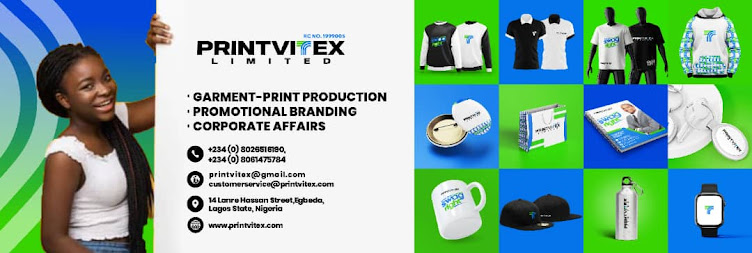In today's rapidly evolving business landscape, values-driven employers recognize the profound impact of aligning their purpose, core beliefs and missions with every aspect of their organization. From fostering an inclusive workplace culture to embracing sustainability and social responsibility, these employers understand that purpose-driven actions not only benefit society but also their bottom line. In this article, we will explore the dynamic intersection of values and promotional branding, showcasing how companies can leverage this potent combination to not only promote their brand but also advance their mission. We'll delve into current trends, examine potential benefits and concerns, and conclude with a forward-looking perspective on the future of this powerful approach.
Current Trends in Businesses:
In an era where consumers, employees, and stakeholders increasingly demand a more conscientious approach to business, companies are reevaluating their strategies. Recent statistics underscore this shift:
- Consumer Expectations: According to a 2021 study by Accenture, 47% of consumers prefer to buy from companies that demonstrate a commitment to sustainability and ethical practices.
- Employee Preferences: Deloitte's 2022 Global Human Capital Trends report revealed that 74% of employees want their employers to play an active role in addressing societal issues.
- Shareholder Activism: Proxy statements and shareholder meetings now frequently feature discussions of companies' environmental, social, and governance (ESG) commitments, with an increasing focus on aligning values with business practices.
These trends make it clear that there is a growing need for companies to showcase their values and make them integral to their operations.
The Potential Benefits and Concerns:
Promotional branding, when aligned with a company's values, offers a multitude of benefits:
- Enhanced Brand Loyalty: When consumers perceive a brand as socially responsible and value-driven, they are more likely to develop a deep sense of loyalty, leading to repeat business and positive word-of-mouth.
- Attracting Talent: Values-driven branding can significantly impact recruitment. Companies that visibly prioritize purpose often attract top talent who are not only skilled but passionate about the company's mission.
- Positive Public Image: Embracing values in promotional branding can lead to a positive public image, which, in turn, can lead to increased market share and higher valuation.
- Innovation and Differentiation: A focus on values-driven branding can inspire innovation, leading to unique products, services, and approaches that set a company apart from its competitors.
However, challenges and concerns must also be addressed:
- Authenticity: Companies must genuinely embrace and practice their stated values. Greenwashing or virtue signalling can backfire and harm a brand's reputation.
- Complex Implementation: Integrating values into promotional branding requires comprehensive planning and execution to ensure consistency and alignment across all aspects of the organization.
- Short-Term Sacrifices: In some cases, companies may need to invest more time and resources in values-driven initiatives, potentially impacting short-term profits.
Promotional Branding Strategies for Values-Driven Employers:
To successfully leverage the power of purpose in promotional branding, employers should consider the following strategies:
- Align with Core Values: Begin by defining the organization's core values and ensure that promotional branding efforts align closely with these principles.
- Sustainability Initiatives: Prioritize eco-friendly promotional products, packaging, and practices, showcasing the company's commitment to environmental responsibility.
- Social Responsibility: Support social causes that resonate with your values and engage in charitable partnerships to make a meaningful impact.
- Inclusive Design: Ensure that promotional materials and campaigns are designed with inclusivity in mind, catering to a diverse and equitable audience.
- Storytelling: Communicate your values and purpose through compelling storytelling that resonates with your audience, conveying authenticity and passion.
- Transparency: Be transparent about your values and the steps you're taking to align your brand with them. Share progress reports and goals with your stakeholders.
The Future of Values-Driven Promotional Branding:
As we look to the future, the importance of values-driven promotional branding is expected to continue growing. Companies that successfully align their values with their promotional branding efforts will reap the benefits of increased brand loyalty, employee engagement, and market differentiation. To remain relevant and competitive, it's essential for businesses to not only adopt this approach but to continually evolve and adapt to changing societal expectations and global challenges.
A key aspect of the future of values-driven promotional branding is the utilization of technology to provide more personalized and targeted experiences. Companies will increasingly harness data and AI to tailor their messaging and products to the individual values and preferences of consumers and employees.
Moreover, the integration of blockchain technology to provide transparent and verifiable data on sustainability and ethical practices is expected to gain prominence. This will enhance trust and credibility, ensuring that values-driven branding efforts are seen as genuine and impactful.
Bottomline:
In conclusion, the power of purpose in promotional branding is a potent force that not only aligns companies with their core values but also serves as a magnet for consumers, employees, and stakeholders who share those values. By embracing this approach and navigating its challenges authentically, companies can position themselves for long-term success in a world where values matter more than ever. In doing so, they will not only strengthen their brand but also contribute positively to the well-being of society and the planet.
Printvitex Limited partners with brands to get optimal value from their promo objectives!






